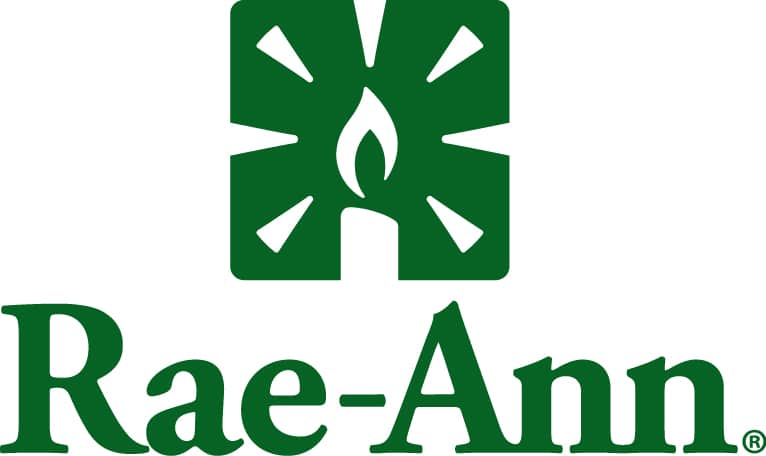What You Need to Know
Millions of American taxpayers with children will begin receiving advance payments of their 2021 Child Tax Credits starting this July. However, not all households that qualify for the Child Tax Credit will receive the advance payments, as there are income-based phaseout rules.
The advance payments were created by the American Rescue Plan (ARPA) enacted in March 2021 and are intended to ease the financial burdens of families still struggling with the economic fallout from the Covid-19 pandemic.
Child Tax Credit Background
The Child Tax Credit (CTC) was created in 1997 as a $500 nonrefundable credit to provide tax relief to middle-income taxpayers and was boosted to $1,000 and made partially refundable in 2001. The CTC was doubled to $2,000 by the Tax Cuts and Jobs Act of 2017 and expanded to families with higher incomes – up to $400,000 for married joint filers – though it remained only partially refundable.
Earlier this year The American Rescue Plan Act enhanced the CTC to $3,000 for each child from ages 6 to 17, and $3,600 for children under 6, and made the credit fully refundable. The ARPA also raised the age of eligibility for the CTC by one year. These changes are effective for the 2021 tax year only.
Most notably, the ARPA legislation also created the Advance Child Tax Credit payments that will start in July.
Eligibility for Advance CTC Payments
Generally, taxpayers who meet income qualifications and who have children who will be aged 17 or under at the end of 2021 will receive the advance payments.
Advance payments will be made to households with 2020 adjusted gross income (AGI) of up to $150,000 for married filing jointly, up to $112,500 for the head of household filers, or up to $75,000 for single filers.
The payments will be made monthly by the U.S. Treasury Department from July through December 2021 and will total 50% of the amount of the 2021 Child Tax Credit that the government believes you are entitled to. If you receive these advance payments, you will be able to claim the remaining 50% of the credit when you file your federal income tax returns for 2021 next year.
If you don’t qualify for the advance payments, you may still take the full Child Tax Credit when you file your income tax returns next year.
The CTC Rules
It’s important to remember the advance payments are for the anticipated Child Tax Credit that taxpayers will qualify for on their 2021 tax returns. The IRS is basing its eligibility information on 2020 tax returns and is factoring in the process of aging out. So, taxpayers who have children turning 18 this year will not qualify to receive the CTC for those children, but they will receive it for younger children.
If you showed children on your 2020 tax return who will qualify for the CTC in 2021, and you qualify on the basis of your 2020 adjusted gross income (AGI), you do not need to take any action to receive the advance payments; the Treasury Department will automatically send you these payments if your 2020 AGI falls into the qualifying range.
All children for whom the credit is claimed must have a Social Security number or a Taxpayer Identification Number.
Should You Opt-Out?
An IRS web portal will be launched by July 1 that will allow taxpayers to opt-out of the advance CTC payments. Why would you want to do this?
If your income is expected to increase beyond the advance payment eligibility range for 2021 and you receive the advance payments based on your 2020 AGI, you must return the money to the government. To avoid having to make this kind of payback, you may opt-out of the advance payments by notifying the IRS through the web portal.
Conversely, if your 2020 income was above the qualifying range but is expected to drop in 2021, or if you have added a child to the household this year – both of which are events that would qualify you for the advance payments – you can notify the IRS through the web portal.
How the Advance CTC Payments Work
If a family has four children, including 4-year-old twins and two older children ages 7 and 9, their 2021 Child Tax Credit would total:
- $7,200 ($3,600 each for the twins)
- $6,000 ($3,000 each for the older children)
- $13,200 (total)
The advance payments would total $6,600 (50% of the total CTC), payable in six monthly installments of $1,100 each. This family would be able to claim the remaining 50% of the CTC next year when they file their income tax returns. Since the credit is fully refundable, a taxpayer whose tax liability is less than the total credit will receive the balance as a tax refund.
To determine how much your family can receive from the Child Tax Credit, click here for a calculator.
Income Phaseout Rules
For 2021, the CTC generally is reduced by $50 for each $1,000 (or fraction thereof) of adjusted gross income over:
- $150,000 for a joint return or a surviving spouse,
- $112,500 for a head of household, or
- $75,000 for any other taxpayer, such as unmarried taxpayers and married taxpayers who file separately.
This reduction in the credit amount is itself limited to the lesser of:
- The increased credit amount (that is, $1,000 for each qualifying child ($1,600 for a child under 6); or
- 5% of the applicable phase-out range.
It’s Complicated
The numbers and the structure of the Advance CTC payments are confusing. What is important to remember is that the CTC is still available to all taxpayers who:
- Have children under age 18;
- Show AGI of up to $400,000 (married filing jointly) or $200,000 (other taxpayers).
Beyond 2021
The expanded CTC is available only for 2021 as of now. President Biden has indicated that he’d like to extend it through at least 2025, and some Democratic lawmakers hope to make it permanent. But it’ll be challenging to pass a bill to make either of these proposals happen. We’ll keep you informed about any developments that could affect your tax planning.
The additional benefit – advance payments – has been added for households with AGI below $150,000 (married filing jointly), $112,500 (head of household, or $75,000 (single filers and married filing separately). If you have questions about the Child Tax Credit or the advance payments, please contact us.
Related Insights
Featured Post

Featured Client Testimonials
BW is a true partner to us. Their knowledge, expertise, and service are a valuable resource to us and play an important role in our success!
John Allen - Vice President of Finance, Kaufman Container

Featured Client Testimonials
I appreciate the exceptional tax advice we received over the years. The (BW team) has a good grasp of our business needs. Thank you for your excellent service.
John Griffiths - Owner, Rae Ann, Inc.

Featured Client Testimonials
The BW team has been fantastic to work with; both the team member at our office as well as at the partner level. Any issues or concerns are handled very efficiently and effectively.
Kelley Needham - Chief Executive Officer, Epilepsy Association

Featured Client Testimonials
Barnes Wendling has been our company accountants for over seven years. Their knowledge has been instrumental in helping us grow strategically during this time. And although we’ve seen many changes in our economy that we cannot control, we’ve always been able to trust the Barnes team to be by our side. The Barnes team feels like family. We can’t thank them enough for their support!
Christine Kloss - Controller, AT&F

Featured Client Testimonials
Barnes Wendling has been our company accountants for over 15 years. During this time, the business has grown exceptionally, and Barnes has kept pace, providing accurate, quality advice. Our finances are more efficient than ever, and the expense of hiring Barnes has been a definite positive add to our bottom line. I give my highest recommendation to their firm.
David Miller, MD - President, Retina Associates of Cleveland

Featured Client Testimonials
Barnes Wendling has provided us guidance and recommendations that have strategically helped strengthen our business and position ourselves for growth. We needed to hire a new VP of Finance and Controller this past year, and they were instrumental in helping us find the best candidates for our company.
Sara Blankenship - President, Kaufman Container

Featured Client Testimonials
We value the trust, accuracy of information, and reliability of Barnes Wendling and Mike Essenmacher personally. Mike has been instrumental as a trusted advisor on accounting, tax, and personnel issues. His advice is always accurate, and he is very reliable. His associates are also very talented.
Dominic Ozanne - President and CEO, Ozanne Construction Company

Featured Client Testimonials
We value Barnes Wendling’s expertise with all things accounting so we can operate our business using our strengths and allowing them to be our experts. They have also brought me a few business sale opportunities to allow me to grow my assets.
John Gaydosh - President and Metallurgical Engineer, Ohio Metallurgical Service

Featured Client Testimonials
Barnes Wendling (especially Lena) did a great job with our financials. Everything. It is extremely refreshing and comforting to know that all of our numbers are not only correct, but they are in the right place(s). Your diligence and reporting truly does make me (personally) feel better.
Thomas Adomaitis - Controller, Bialosky Cleveland

Featured Client Testimonials
I can wholeheartedly tell you that I have yet to work with an audit or tax team that have been more helpful, easy to work with, and committed than the team at Barnes Wendling- I have been through three different firms in the last few years.
Michelle Saylor, Former Controller, Aero Mag

Featured Client Testimonials
Floyd Trouten at Barnes Wendling CPAs is an “expert’s expert” when it comes to M & A accounting. Not only does he understand the evolving details of the Tax Code but he also sees the fine points of their application for owners, managers, investors, and financiers.
Mark A. Filippell, Western Reserve Partners

Featured Client Testimonials
The service is amazing at Barnes Wendling CPAs. The benefit is worth more than the cost. Sometimes it’s true that you get what you pay for.
Mark Boucher - Former Owner, Castle Heating & Air






